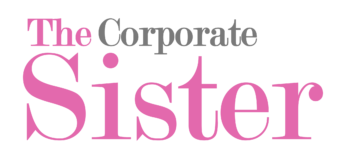Every year towards somewhere from the beginning to the end of December, the oh so familiar goal-setting, resolution-making dance starts again. From setting SMART goals to building vision boards, it’s all about setting intentions, objectives and/or resolutions for the New Year. Despite these dire statistics, many still believe in setting goals, including many working women. However, nearly 80% of all goals set for the New Year are dropped by the month of February. As studies have found women set goals differently than men, could there be a way to improve the goal-setting process and results by considering these gender differences?

According to one study analyzing gender differences in private and public goal-setting, that is when information about goals is public vs. being private, women tend to choose lower goals than men in general. While men generally tend to outperform women under both private and public goal-setting contexts, women perform worse than women when their goals are made public, as opposed to when their goals are private, in which case they perform better than men. These findings indicate lower levels of self-confidence in women in general, despite the fact that they set more ambitious public goals, which can be explained by the need to socially conform and fit in with the popular opinion. These also confirm higher levels of self-confidence in men, while also supporting gender differences in the attribution of success to external factors such as luck for instance by men, as opposed to internal factors such as skills and abilities for women. Furthermore, the fact that women perform worse under public-goal setting can be correlated with women’s lower performance in competitive environments.
As related to the nature of the goals set by men and women, a 2015 Harvard study demonstrates that while women have more life goals than men, a smaller number of these goals is associated with achieving power in their careers. This is corroborated by earlier studies according to which men and women regard their environments, more specifically their work environments, with different attitudes and expectations, taking us right back to the Maslow’s hierarchy of needs, in which females’ position stands at the self-fulfillment level, while males’ position is at the survival level.
Goal-setting also involves a certain level of decision-making, in which gender plays an important role as women tend to apply more intuition and emotion to morally evaluating situations.
What does this mean for women and goal-setting? One thing it could mean is that the traditional ways in which we’ve learnt to set big, ambitious goals was never adapted to the way women set goals. What it could also mean is that if we adapted the goal-setting process to women more, we may obtain more effective and impactful goals overall. If you’re a working woman reading this, then you may want to re-evaluate the way you have been setting goals. Here are three tips to get started:
- Start with private rather than public intentions
Goal-setting is a powerful process that requires some serious introspection and self-awareness. As a working woman and mom, it is important for me to set goals that are authentically aligned with my purpose, as opposed to goals imposed by a need to conform to societal or other forms of pressures. Starting this process in a private manner before making any public commitments is a good way to ensure your goals, and commitment to achieve them, are solid.
- Tie your professional goals with your life goals
There’s a reason why studies are showing that women have more life goals than men. Considering that women are more concerned with self-fulfillment than men, as well as the many personal and community hats they wear, tying professional to life goals can help check both the life and work boxes.
- Avoid competitive goals
As research has shown women perform less well when setting public goals, due to the competitive nature of the latter, it could help to set goals more focused on personal improvement than competitive in nature.
All in all, the goal-setting process for women can be adapted to the unique ways women think, as well as how they envision their lives and careers. This can not only help set more authentic, sustainable and purposeful goals, but also improve women’s overall performance. It is also a wake-up call for organizations and businesses to revisit the goal-setting process based on gender differences, fore more impactful, high-performing goals and more engaged, committed employees.
How are you setting your goals this year?
The Corporate Sis.









